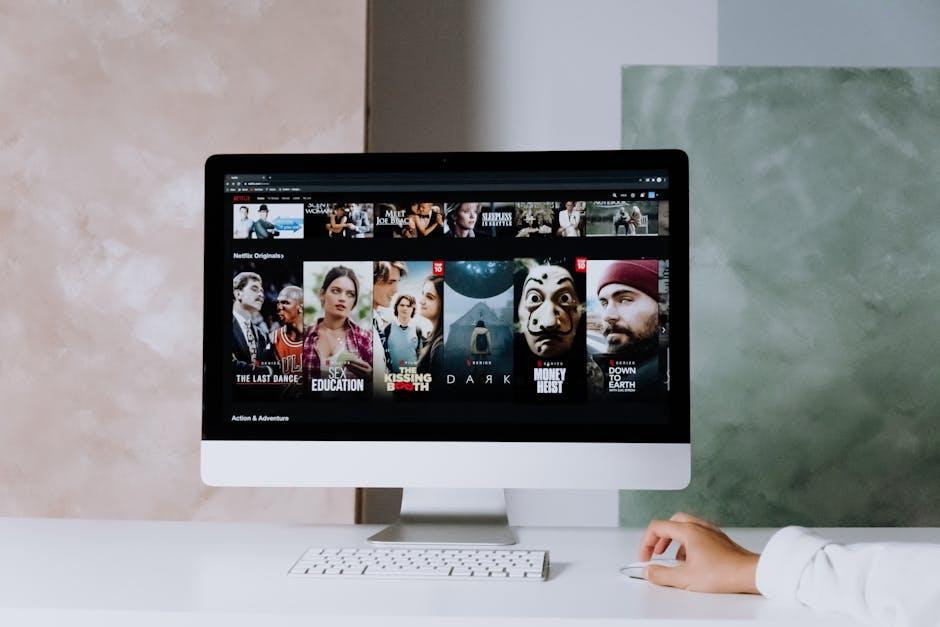In today’s digital age, streaming has become a cornerstone of entertainment, offering a vast array of content at our fingertips. However, not everyone enjoys the luxury of the latest technology, and many find themselves relying on older or budget devices to access their favorite shows and movies. These devices, while functional, often struggle to keep up with the demands of modern streaming services, leading to frustrating interruptions and diminished viewing experiences. This article aims to guide you through practical steps and solutions to enhance streaming performance on older or budget devices, ensuring a smoother and more enjoyable experience without the need for costly upgrades. Whether you’re dealing with buffering issues, slow load times, or subpar video quality, the following tips will help you optimize your device and make the most of your streaming sessions.
Optimizing Streaming Settings for Better Performance
To enhance the performance of streaming on older or budget devices, it’s essential to fine-tune the settings to match your device’s capabilities. Start by adjusting the resolution and bitrate. Lowering the resolution to 720p or even 480p can significantly reduce buffering, while a bitrate of 1500-2500 kbps should suffice for smooth playback. Most streaming platforms allow these adjustments in their settings menu.
- Disable unnecessary background applications to free up system resources.
- Ensure your device’s firmware is up-to-date for optimal performance.
- Switch to a wired internet connection if possible, as it provides a more stable connection than Wi-Fi.
- Use adaptive streaming options that automatically adjust quality based on your network conditions.
By implementing these changes, you’ll likely notice a significant improvement in streaming performance, allowing for a more enjoyable viewing experience even on less powerful devices.

Enhancing Device Compatibility with Streaming Services
For those using older or budget devices, ensuring seamless streaming often involves a few strategic tweaks. Optimizing device settings can significantly enhance performance. Begin by reducing the stream quality to 720p or even 480p, which can lessen buffering and prevent lag on less powerful hardware. Clearing cache regularly can also free up memory and improve loading times. Additionally, disabling background apps and processes will allocate more resources to your streaming service, resulting in smoother playback.
Another effective method is to utilize lightweight browsers or streaming apps that are designed to consume fewer resources. Consider these tips:
- Use Ethernet: Connect your device directly to your router with an Ethernet cable for a more stable connection than Wi-Fi.
- Adjust Device Settings: Lower the resolution and disable any unnecessary visual enhancements in the device settings.
- Update Software: Regularly update both the streaming apps and your device’s operating system to benefit from performance improvements.
- External Storage: If possible, use external storage to offload media files, which can free up internal space for smoother streaming.
Implementing these adjustments can dramatically improve the streaming experience, even on devices that are not cutting-edge. By making the most of the available resources, users can enjoy their favorite content with fewer interruptions.

Utilizing External Accessories for Improved Streaming Quality
Enhancing your streaming setup can be as simple as integrating some well-chosen external accessories. External microphones and webcams can significantly boost audio and visual clarity, making your content more engaging. While the built-in options on older or budget devices may suffice, they often lack the quality needed for professional-level streaming. Consider investing in a USB microphone or an HD webcam to immediately elevate your stream’s production value.
Additionally, capture cards are invaluable for those looking to stream console gameplay. They bypass the limitations of built-in streaming features on older devices, offering smoother and more reliable performance. External storage solutions, such as SSDs, can also alleviate the strain on your device, ensuring smoother playback and quicker loading times. To make the most of these accessories, keep the following in mind:
- Choose accessories that are compatible with your device’s ports and operating system.
- Look for products with good reviews and reliable brand reputations.
- Consider the balance between cost and benefit to avoid unnecessary expenses.

Regular Maintenance and Updates for Optimal Streaming Experience
To ensure that your streaming experience remains smooth and enjoyable, it’s crucial to keep up with regular maintenance and updates, even on older or budget devices. Here are some tips to help you stay on top of it:
- Update Your Apps: Always ensure that your streaming apps are up-to-date. Developers regularly release updates to fix bugs, improve performance, and add new features. Check your app store periodically for updates.
- Clear Cache Regularly: Streaming apps store temporary data to enhance performance, but over time, this can slow down your device. Clear the cache in your app settings to free up space and improve speed.
- Optimize Your Network: A strong, stable internet connection is essential. Consider repositioning your router, using a wired connection, or upgrading your internet plan if necessary.
- Device Firmware Updates: Manufacturers often release firmware updates that can enhance device performance. Make sure your device’s firmware is up-to-date to benefit from these improvements.
By incorporating these maintenance practices into your routine, you can significantly enhance your streaming experience, even on devices that might not boast the latest hardware.







































